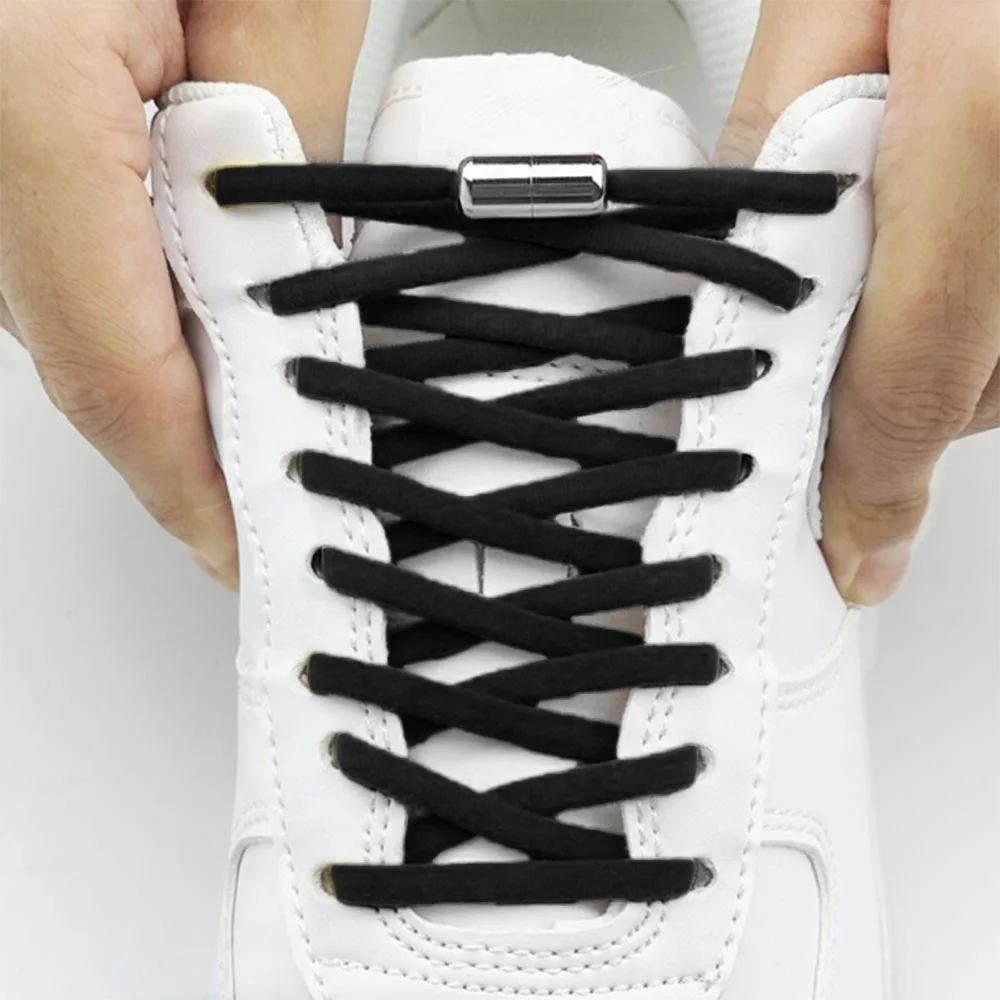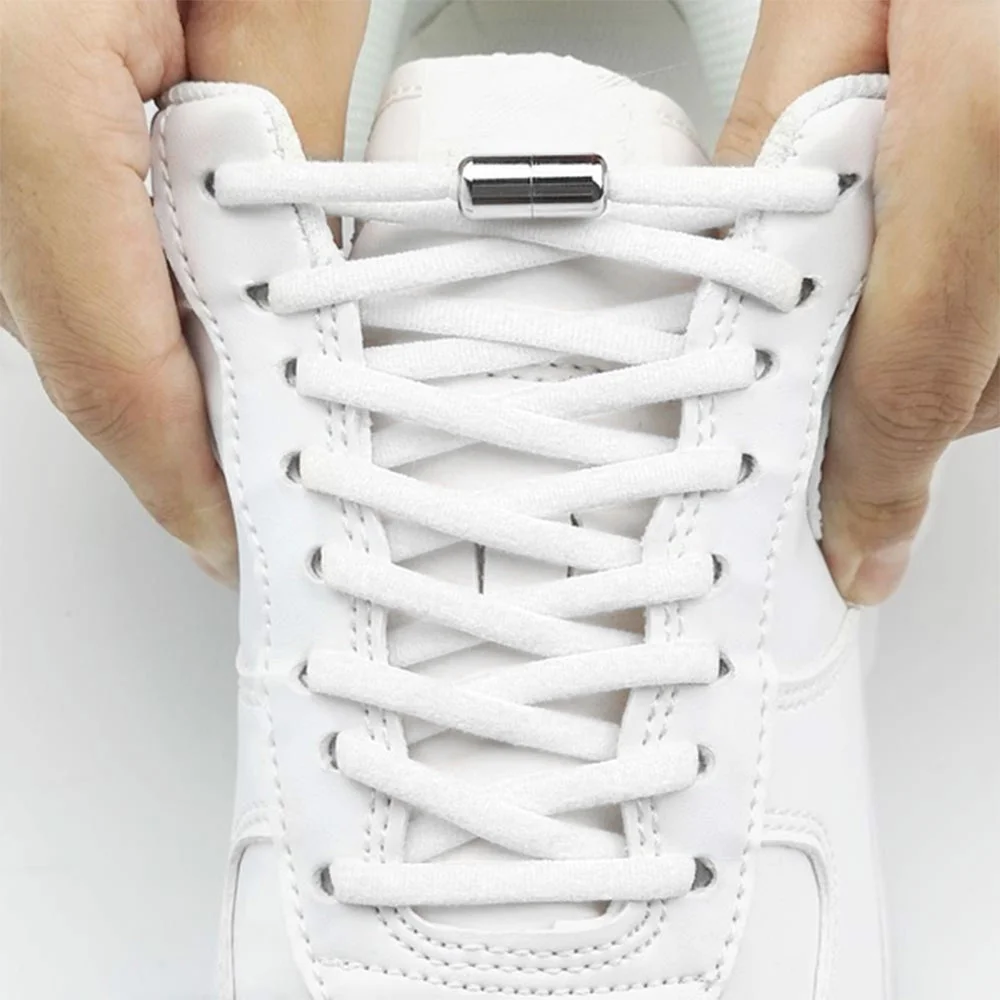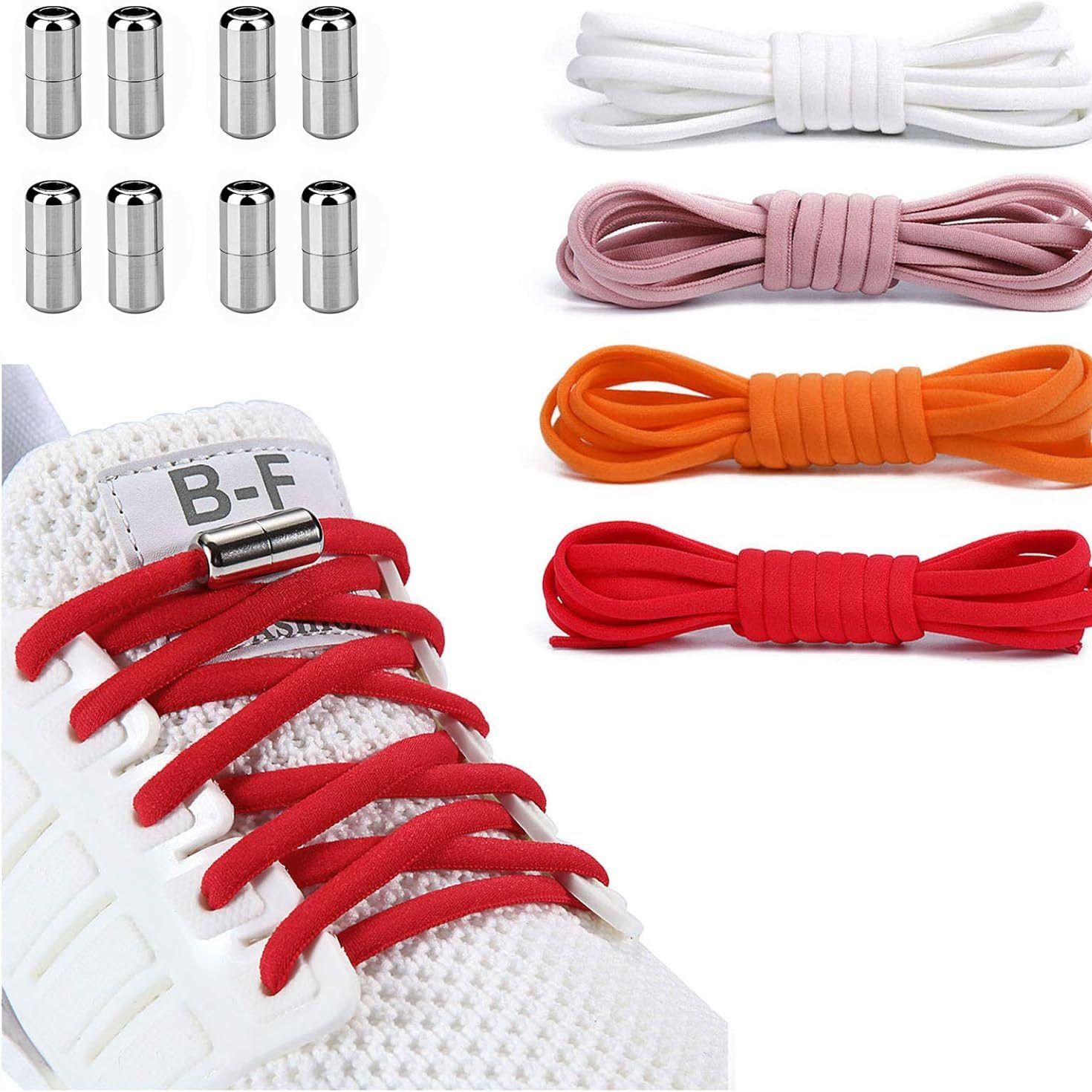Introduction
In today’s fast-paced world, convenience often takes precedence over tradition, especially when it comes to daily tasks like tying shoelaces. No tie shoelaces offer a hassle-free solution that allows you to slip on your shoes without the need to fuss over laces every time you head out. They’re perfect for those who are busy, parents managing little ones, athletes, or anyone looking for a simpler way to wear shoes. This article explores various methods of how to tie no tie shoelaces, different styles, and tips to make the most of this innovative footwear solution.
Understanding No Tie Shoelaces
What Are No Tie Shoelaces?
No tie shoelaces are a clever alternative to traditional shoelaces that eliminate the need for tying knots. Instead of regular laces, they typically consist of elastic bands or cords that allow for easy slipping on and off the feet. They can come in various styles and designs, from simple elastic laces to specialized no-tie lock systems, allowing users to customize the fit of their shoes.
The Benefits of No Tie Shoelaces
1. Convenience
One of the primary advantages of no tie shoelaces is the convenience they provide. The ability to simply slide your shoes on or off without the hassle of tying and untying laces saves time and effort, especially during busy mornings.
2. Comfort
No tie shoelaces can create a more comfortable fit by distributing pressure evenly across the foot. Traditional shoelaces can pull in one direction, leading to discomfort, whereas elastic laces can adjust to the foot’s shape with movement.
3. Versatility
Whether you’re running errands, going for a jog, or simply enjoying a casual day out, no tie shoelaces fit any occasion. They are suitable for various types of footwear, from sneakers to dress shoes, so you can enjoy the benefits across your entire shoe collection.
4. Safety
For children and seniors who may struggle with traditional laces, no tie shoelaces reduce the risk of tripping or falling due to untied laces. It’s an excellent solution for individuals with mobility challenges, offering independence and security.
Types of No Tie Shoelaces
Elastic Shoelaces
Elastic shoelaces are perhaps the most common no tie option. These laces are made of flexible, stretchy material that allows you to tighten or loosen them based on your foot’s shape and comfort. Simply thread them through the eyelets, adjust to your liking, and you can easily slip in and out of your shoes.
How to Install Elastic Shoelaces
- Remove Original Laces: Start by taking out your current shoelaces from the shoes.
- Insert Elastic Laces: Thread the elastic laces through the eyelets in your desired method or pattern.
- Adjust Tension: Determine how tight or loose you’d like the fit to be and adjust accordingly.
- Secure Ends: Some elastic laces come with a locking system or toggle that allows you to secure the ends without needing to tie a knot.
No Tie Lock Systems
Another common method for creating no tie shoelaces is using a locking system, usually consisting of a cord that is inserted into the shoe’s eyelets and secured by a small locking mechanism. This system combines flexibility with firmness, ensuring your shoes remain snugly fitted throughout the day.
How No Tie Lock Systems Work
- Setup: Similar to elastic laces, begin by removing the current laces and threading the locking cord through the eyelets.
- Adjust Length: Ensure the cord is of the perfect length to suit your foot snugly.
- Lock It Down: Use the locking mechanism to secure the cord in position, preventing any slippage during wear.
How to Tie
Simple Method for Beginners
If you’re new to no tie shoelaces, starting with a basic method is important to understand the mechanics behind it. While there are various advanced techniques, mastering a simple one can make your journey much smoother.
Step-by-Step Guide
- Preparation: Gather your tools—elastic laces or lock systems and, if necessary, scissors for adjustments.
- Insert Components: Pass the laces or cord through each eyelet in the manner you prefer. You can choose to lace them straight across or create a criss-cross pattern, depending on the style of your shoe.
- Adjust to Fit: Once laced, it’ll be time to step into your shoes. Make necessary adjustments while you stand or walk to find your desired snugness.
- Secure: If you’re using elastic laces, adjust the tension until it’s comfortable and then lock the ends. For locking systems, ensure everything is tightly in place.
Tips for Getting the Right Fit
- Measuring Foot Size: Make sure to measure your foot size correctly before choosing no tie shoelaces. This ensures you select elastic cords or lock systems that will cater to your specific needs.
- Test Your Setup: Walk around your house with your newly laced shoes. Adjust them if they feel too tight or too loose.
- Consider Your Activity Level: If you’re using the shoes for specific activities like running, ensure that the no tie system you choose accommodates the required movement comfortably.
Fashion and Style Considerations
Choosing the Right Colors and Patterns
When choosing no tie shoelaces, don’t forget that style matters. These laces come in a variety of colors, patterns, and textures. Opt for shades that complement your shoes, or go bold with contrasting colors to create a unique look.
Matching with Outfits
Consider the typical clothing you wear. If you often wear casual attire, bright or eclectic patterns can add flair to your ensemble. When dressing for more formal occasions, select laces that maintain a level of sophistication and class.
Brands and Options
There are numerous brands and styles available in the no tie shoelace market. It’s essential to do your research to find the ideal product that fits your needs in terms of quality, price, and style.
- Lock Laces: This popular brand offers a variety of colors and is known for its durability and secure locking mechanism.
- Xtenex: A unique design featuring a knot-less system that promotes varying tension based on foot size.
- Bungee Laces: Elasticated bungee laces offer a fun, colorful range for children and adults alike.
 Maintenance and Care
Maintenance and Care
Routine Checks
While no tie shoelaces provide ease, it’s essential to check your setup periodically. Make sure the elastic cords haven’t stretched out, and the locking mechanism works correctly.
Cleaning Instructions
Shoelaces can accumulate dirt and grime over time, requiring some cleaning. Most elastic and lock systems can be gently hand washed with soap and water to remove stains and dirt.
Replacement Options
Always keep a backup in case your no tie shoelaces wear out or become damaged. Having an extra pair on hand can save you from unexpected issues when you’re in a hurry.
Environmental Considerations
Sustainability in No Tie Shoelaces
As consumers become more aware of their environmental impact, choosing sustainable products has become increasingly essential. Many brands offer eco-friendly options for no tie shoelaces made from recycled materials.
Recycling and Disposal
When your no tie shoelaces eventually reach the end of their life cycle, consider recycling them if possible. Research local disposal guidelines for footwear accessories to ensure you’re following proper environmental practices.
Conclusion: The Future of Shoelacing
Learning how to tie no tie shoelaces provides a pathway to greater convenience and comfort in our daily lives. Whether you choose elastic laces or a locking system, there’s no denying the benefits of a hassle-free footwear experience. This simple adjustment can transform your routine, making shoes an effortless addition to your outfit.
Embrace the change, explore the various options available, and enjoy the next step in effortless elegance. With technological advancements continuing to improve our footwear landscape, the future of shoelacing looks brighter and more convenient than ever.

